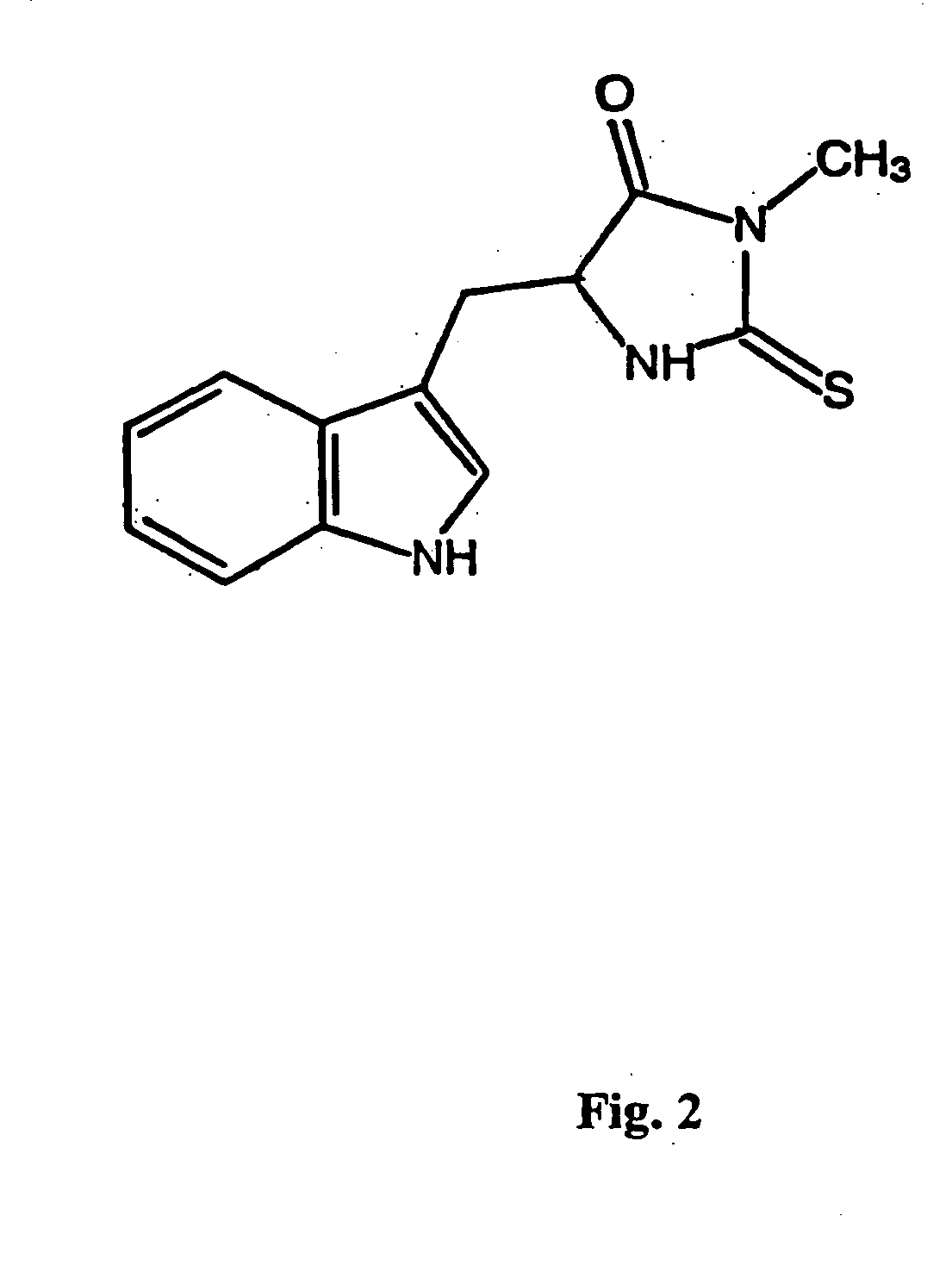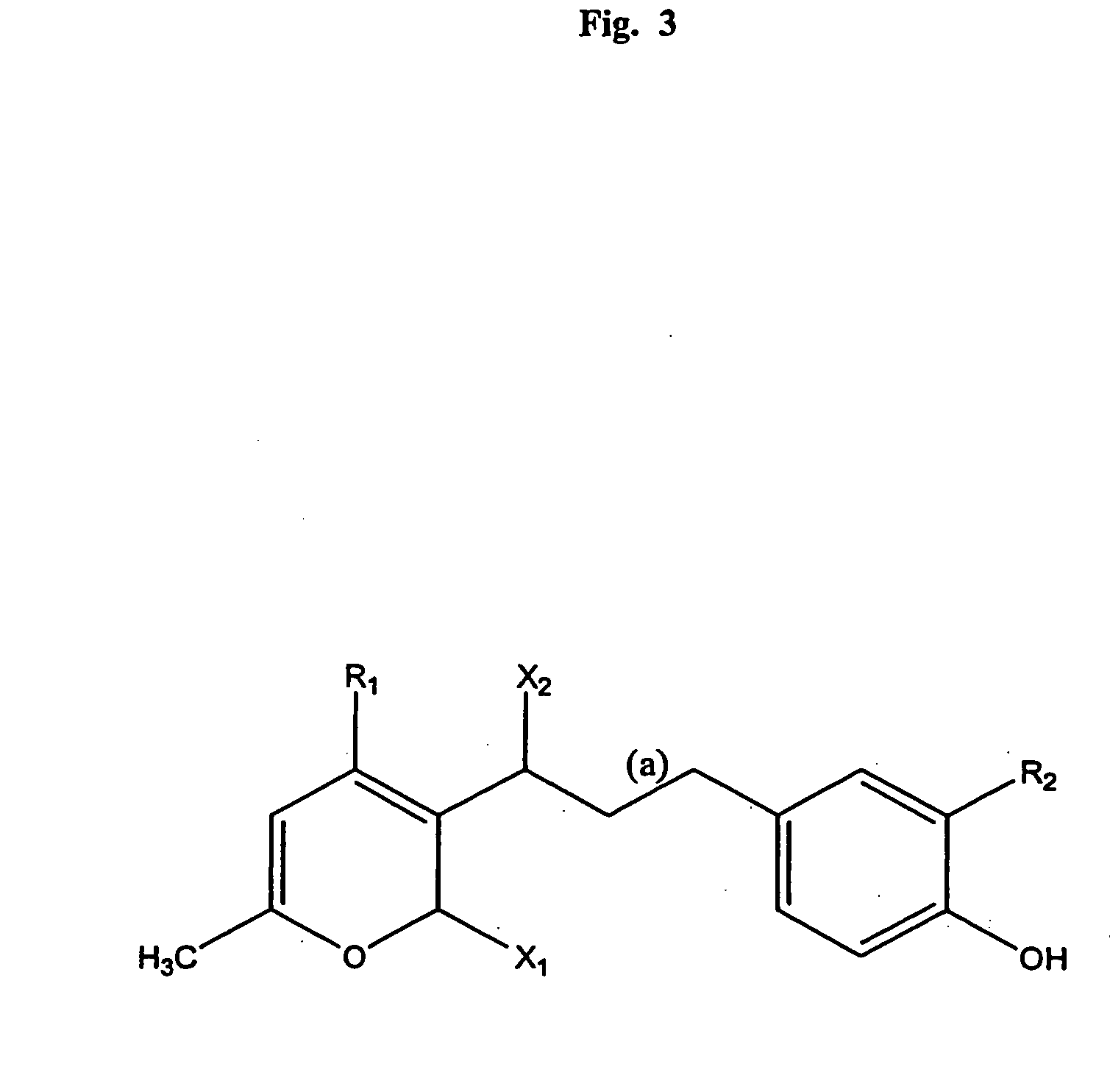Small molecule inhibitors of necrosis
a small molecule inhibitor and necrosis technology, applied in the field of small molecule inhibitors of necrosis, can solve the problems of unrecognized control of necrosis, achieve the effects of reducing the ultimate level of necrosis, enhancing bioavailability, solubility, or stability, and reducing toxicity or dosag
- Summary
- Abstract
- Description
- Claims
- Application Information
AI Technical Summary
Benefits of technology
Problems solved by technology
Method used
Image
Examples
example 1
Cells Undergo Necrosis in Response to zVAD-fmk and TNFα
[0102] The cell lines U-937 and BALB / c 3T3 were assayed for the occurrence of necrosis in response to the combined treatment of zVAD-fmk, a caspase inhibitor; and TNFα, a cell death stimulator. The cells (5×105 cells / ml) were exposed to zVAD-fmk (100 μM) and human TNFα (40 ng / ml) for 72 hours. Induction of necrosis was assayed by measuring the cellular ATP levels in response to TNFα (Crouch et al., supra, Storer et al. supra, and Cree et al. supra). Cells which underwent necrosis exhibited decreased cellular ATP levels relative to controls cells which received no treatment, zVAD-fmk (100 μM) alone, or human TNFα (40 ng / ml) alone. It was found that the cells underwent necrosis in response to treatment with zVAD-fink and TNFα. The cells were also observed morphologically for the occurrence of apoptosis or necrosis, for example, by analyzing the cells for membrane blebbing and nuclear condensation.
example 2
Identification of Small Molecules that Decrease Necrosis
[0103] The U-937 cell line was used to screen a library of 16,000 small molecule chemical compounds for a compound's ability to decrease necrosis induced by exposure of the cell to zVAD-fmk and TNFα. The library of chemical compounds used in this screen were from ChemBridge (ChemBridge Corporation, San Diego Calif.).
[0104] In a primary screen, U-937 cells (5×105 or 7.5×105 cells / ml) were first exposed to zVAD-fmk (100 μM). Thirty minutes later the same cells were exposed to a chemical compound from the library (5 mg / ml, dissolved in 0. 1-0.5 μl of DMSO, giving a final DMSO concentration of 0.3% to 1.5%). After an additional thirty minutes, TNFα (40 ng / ml) was added to the cell culture medium. The cells were then incubated at 37° C. for 72 hours, and were then assayed for cellular ATP levels. Compounds which did not prevent a decrease in cellular ATP levels were compounds which did not prevent necrosis in response to treatmen...
example 3
Cells Are Protected From Necrosis Upon Exposure to zVAD-fmk and DMSO
[0108] Exposure of low density U-937 cells (1×105 cells / ml) to zVAD-fmk (100 μM) and DMSO (0.5%) for 72 hours results in cell death by necrosis. The compounds identified to decrease cell necrosis triggered by zVAD-fmk and TNFα, compounds 115807, 115681, 210227, and 215686 from the ChemBridge chemical library, were also evaluated for their ability to decrease cell necrosis induced by zVAD-fmk and DMSO. The cells (1×105 cells / ml) were first exposed to zVAD-fmk, and then thirty minutes later to the above-identified small molecules that decrease necrosis. After an additional 30 minutes, the cells were exposed to DMSO. Seventy-two hours after exposure to the compounds, cellular ATP levels were measured, as described above. All four chemical compounds that decreased necrosis induced by zVAD-fmk / TNFα also decreased necrosis induced by zVAD-fmk / DMSO.
PUM
| Property | Measurement | Unit |
|---|---|---|
| concentration | aaaaa | aaaaa |
| solubility | aaaaa | aaaaa |
| stability | aaaaa | aaaaa |
Abstract
Description
Claims
Application Information
 Login to View More
Login to View More - R&D
- Intellectual Property
- Life Sciences
- Materials
- Tech Scout
- Unparalleled Data Quality
- Higher Quality Content
- 60% Fewer Hallucinations
Browse by: Latest US Patents, China's latest patents, Technical Efficacy Thesaurus, Application Domain, Technology Topic, Popular Technical Reports.
© 2025 PatSnap. All rights reserved.Legal|Privacy policy|Modern Slavery Act Transparency Statement|Sitemap|About US| Contact US: help@patsnap.com



